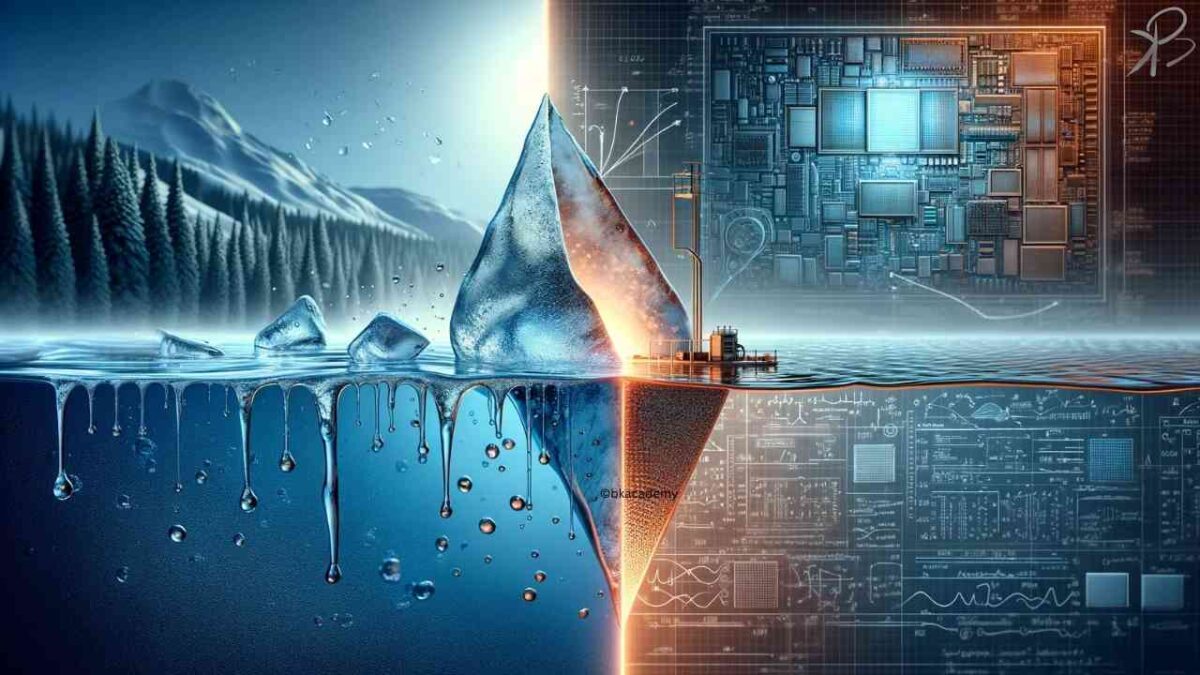Phase Transition From Ice to Water using FEA - Have you ever paused to consider the simple act of ice melting into water? This everyday occurrence is a complex ballet of physics, a phase transition where solid ice turns into liquid water. But what drives this transformation? It’s all about energy and molecular rearrangements.
At the heart of this process is thermal dynamics. Ice absorbs heat from its surroundings, but instead of immediately turning into a puddle, it undergoes a fascinating transformation. This heat absorption doesn't increase the ice's temperature at first; rather, it breaks down the hydrogen bonds holding the ice’s molecular structure together. During this phase, the temperature remains constant at 0°C (32°F), a phenomenon known as the latent heat of fusion.
Diving into the Molecular World
On a molecular level, the rigid, crystalline structure of ice gives way to the more chaotic, fluid nature of water. Imagine the orderly rows of molecules in ice breaking free and moving about with greater freedom. This change is not just a shift in physical state but a dance of molecular dynamics, fascinating to watch and crucial for various scientific applications.
The Role of Multiphysics Simulation
Enter the world of multiphysics simulation, a method that allows scientists to model and predict how different physical phenomena interact during this phase transition. These simulations are not just theoretical exercises but practical tools that provide insights into the complex interplay of heat transfer, fluid dynamics, and thermodynamics.
Using software like COMSOL Multiphysics or ANSYS, researchers can create detailed models of the ice-to-water transition. These tools offer a virtual laboratory where various conditions can be manipulated and observed, providing a deeper understanding of the process.
Setting the Virtual Stage
To simulate the ice melting process, one must first define the simulation’s parameters. This includes the geometry of the ice, the surrounding environmental conditions, and the initial temperature distribution. The simulation space is divided into a mesh, a grid that allows for the detailed calculation of thermal and molecular changes at numerous points within the ice block.
The Simulation Unfolds
As the simulation runs, it calculates how heat moves through the ice, gradually increasing the energy of the molecules. The interface where ice meets water becomes a dynamic frontier, with the phase change occurring molecule by molecule. Monitoring the temperature distribution and the changing phase boundary provides valuable insights into the process's speed and pattern.
Matching Simulation with Reality
The true test of any simulation is its alignment with real-world observations. Validating the simulation results against experimental data ensures the model accurately represents the physical process. Adjustments and calibrations are made based on this feedback, refining the simulation to better match observed behavior.
Applications in the Real World
Understanding the phase transition from ice to water is not just academic; it has practical implications in various fields. In engineering, it aids in designing efficient cooling systems. In environmental science, it helps model climate change effects, such as melting ice caps and glaciers.
Future Horizons in Simulation Technology
Looking ahead, the integration of AI and machine learning with multiphysics simulations promises even more accurate and dynamic models. These advancements could revolutionize how we understand and predict phase transitions, leading to innovations in materials science, meteorology, and beyond.
Concluding Thoughts
The transition from ice to water, a seemingly simple process, encapsulates the complex interplay of heat, energy, and molecular dynamics. Through the lens of multiphysics simulations, we gain not only a deeper understanding of this fundamental phenomenon but also the tools to apply this knowledge in practical, impactful ways. In exploring the depths of this phase transition, we uncover the broader implications of such scientific pursuits, revealing the interconnectedness of natural processes and human ingenuity. This journey through the molecular to the macroscopic world highlights the ever-present role of phase transitions in shaping our understanding of the physical universe.
official COMSOL Website
For help in modelling in any FEA, FDTD, DFT Simulation / Modelling work, you can contact us (bkcademy.in@gmail.com) or in any platform.
Interested to Learn Engineering modelling? Check our Courses?
check out our YouTube channel
u can follow us on social media
Share the resource
-.-.-.-.-.-.-.-.-.().-.-.-.-.-.-.-.-.-
© bkacademy
